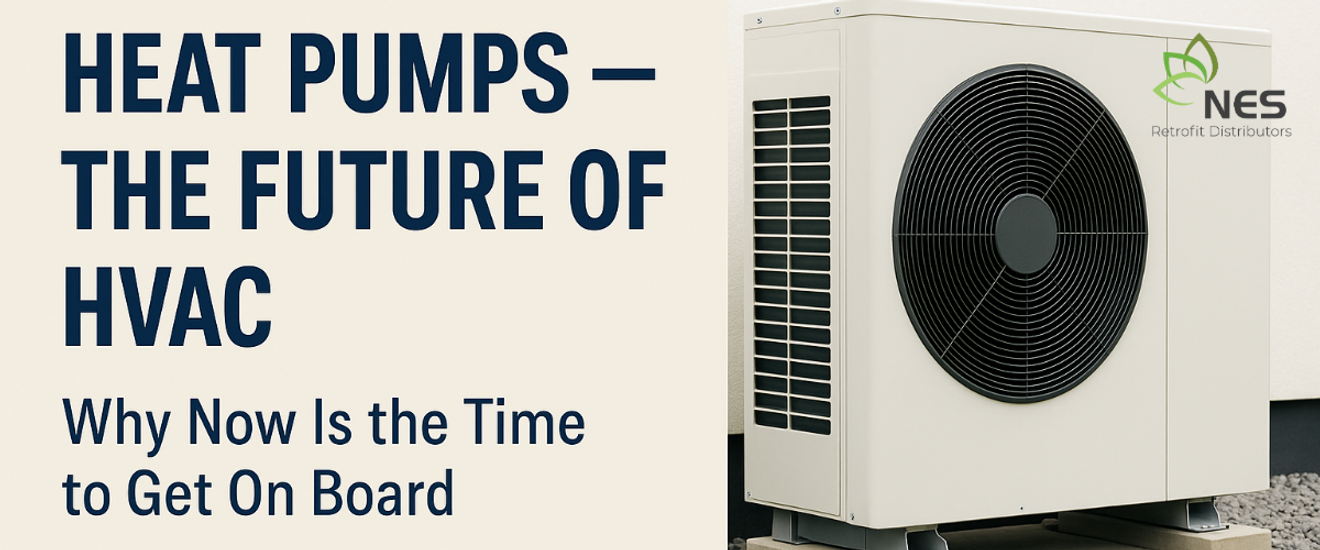Heat Pumps — The Future of HVAC: Why Now Is the Time to Get On Board
Oct 29th 2025
From comfort and cost-savings to grid-resilience and net‐zero readiness, heat pumps are moving from niche to necessary.
In a world where energy prices rise, carbon regulations tighten and the call for all-electric buildings grows louder, one technology is quietly stepping into the limelight: the heat pump. For too long, heating and cooling has been dominated by fossil-fuel-burning systems or legacy resistive electric heat. But today, heat pumps are evolving, becoming more efficient, more cost-competitive and more integrated into a smart building ecosystem. For contractors, distributors and building-owners alike, they’re not just an alternative — they’re the future of HVAC.
1. Why heat pumps are becoming the standard
-
Much higher efficiency: Modern air-source and ground-source heat pumps can deliver 3–4 times more heat energy than the electrical energy they consume.
-
Dual capability: They provide both heating and cooling from the same system — simplifying HVAC design and reducing equipment footprint.
-
All-electric readiness: As building codes and decarbonization programmes favour “fuel-switching” (i.e., moving away from gas/oil), heat pumps are the enabler.
-
Grid-resilience & flexibility: As seen in recent studies, heat pumps can be paired with thermal storage, smart controls and demand-management to reduce peak loads and support the grid. Green Builder Media+1
2. Market momentum & policy tailwinds
-
In regions like the Northeast U.S., sales of air-source heat pumps have surged — one report noted growth from ~50,000 units (2013) to ~250,000 by 2021. Northeast Energy Efficiency Partnership
-
Governments are increasingly setting targets for heat-pump market penetration and incentivising installations. These regulatory and incentive trends create a market pull that complements technical progress.
-
For distributors like NES and your company, this means rising demand for inventory, installation training, service parts, and coordinated marketing.
3. Technological evolution — what’s next
-
Cold-climate performance: Manufacturers are now offering heat pumps capable of −13 °C (or lower) operation with high efficiency.
-
Smart integration: WiFi-enabled units, app control, predictive maintenance, and AI-enabled monitoring are becoming standard.
-
Storage pairing & grid synergy: Combining thermal storage with heat pumps allows shifting heating load off-peak, lowering costs and smoothing demand.
4. What it means for contractors & distributors
-
Training & certification: As heat pump sales grow, installer training becomes critical (sizing, refrigerant management, controls, commissioning). Mid-stream programmes emphasise up-skilling the workforce. Ask us about NES University.
-
Inventory & supply-chain planning: With increasing demand, stocking the right models (split systems, ductless, residential/ commercial) and leveraging incentives will be a competitive advantage.
-
Marketing to end-users: It’s not just “We’ll drop in a heat pump.” Messaging needs to emphasise future-proofing, comfort, resilience, and financial savings.
-
Service & maintenance: As the ecosystem becomes smarter and more complex, post-installation service, remote monitoring and system optimisation become value drivers.
5. Barriers & how to overcome them
-
Up-front cost: While lifecycle savings are strong, the higher install cost can be a hurdle. Using incentives, financing and cost-clear messaging helps.
-
Cold-weather performance misconceptions: Educating customers about modern cold-climate capable heat pumps is key.
-
Workforce readiness: Ensuring installers are capable and confident is essential — training and partnerships mitigate this.
-
Grid & building readiness: Some older buildings may need envelope upgrades, electrical service upgrades, or be paired with storage to maximise value.
6. Your opportunity: Why now?
If you’re in the distribution channel, now is the time to lean in:
-
Promote multi-tech bundles: Positioning heat pumps as part of a “full building electrification” bundle is powerful.
-
Educate specifiers & contractors: Share case-studies, ROI analyses, incentive overviews, and future-proofing benefits.
-
Get ahead of stock & training: Make sure you have the right SKUs, parts, and installer training resources ready for the wave of installations.
-
Create service-ecosystem: Offer or partner for commissioning, remote monitoring, preventive maintenance — this becomes a differentiator.
Conclusion
The transition to a low-carbon, efficient, electrified built environment isn’t coming — it’s here. And the heat pump stands at the heart of that transformation. For contractors, specifiers and distributors who move early, the benefits are clear: improved comfort, lower operating costs, strong incentive structures, positive environmental impact — and business growth. The future of HVAC is not just gas or conventional electric — it’s heat pumps. Let’s make sure you’re ready.
Call to Action
Ready to explore how heat pumps can transform your next project or inventory strategy? Contact us at
(844) NES-SAVE or schedule a demo to see heat-pump models in action and map out incentives in your region.

